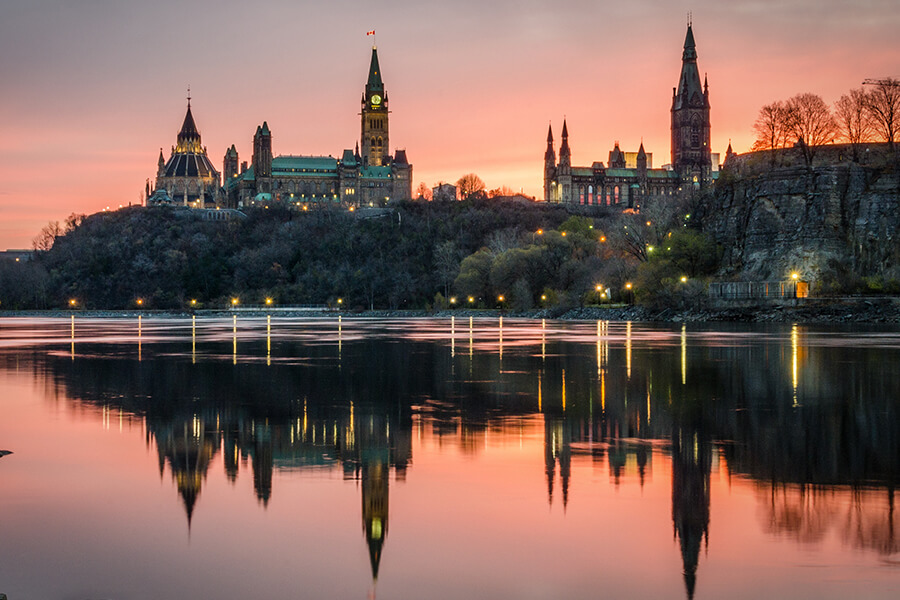But Canada wasn’t the only country that opened its fiscal taps.
Countries around the world were spending left, right and centre to stave off the pandemic-induced economic crisis. And a lot of that spending was necessary. In fact, the International Monetary Fund tore up its rulebook and encouraged countries to spend more, not less.
“Still, too much of anything is a bad thing. Our entire economy in Canada is roughly $2.2 trillion, while the federal government has committed around $350 billion in fiscal support. That’s a lot of money flowing into the system.”
The massive fiscal support so far has led to a lot of money being transferred to Canadian’s pockets. Incomes increased in 2020, which is unusual for a recession. Canadians saved up that extra money, and now that restrictions are being lifted and the economy is opening up, Canadians want to spend more. As a result, strong demand has been interacting with weak supply, pushing prices higher.
How to keep inflation at bay
Next week’s federal budget is an opportunity for the government to shield Canadians from worsening living standards caused by inflation. The following fiscal recommendations can help keep inflation at bay:
Cut unnecessary spending:
- While not easy to do politically, cutting unnecessary spending is not only good economics but also the right thing to do. The government should consider dropping programs that have been announced but not yet funded. It would be best to avoid adding new spending to economic sectors like construction that are already hot and experiencing labour shortages.
- A large chunk of the $101 billion in additional spending announced during the previous budget hasn’t been allocated. Given new spending pressures brought about by the Liberal Party-NDP deal and Russia’s invasion of Ukraine, the government should consider how, when and where it will spend the remaining amount.
Spend to enhance productivity:
- Any additional spending should enhance the economy’s productivity and be a move away from supporting more consumption. This would mean investing in projects that enhance Canada’s productivity, for instance, by making it easier for businesses to invest more. The government could also spend more on innovation, technology adoption and research and development. Spending in these areas will increase economic productivity, which will push prices down and increase long-term economic growth.
Don’t spend away the upcoming revenue windfall:
- Thanks in part to higher commodity prices, the government is likely to have more revenue than previously anticipated. The temptation of course will be to spend away the unexpected flow of money and fulfil platform pledges. But the government must be careful not to over-stimulate the economy. Prudent fiscal policy would point to the need for restraint in the face of the unexpected revenue increase.
- It would be best to save the newfound revenue for a rainy day or, at the very least, to adhere to the spending plans announced during the 2021 fall update. If so, the government will reduce its deficit and put the country on a path towards a healthier fiscal standing.
Lower certain taxes or at least don’t raise them:
- Canadians should be given some reprieve from high prices in the form of tax cuts in certain sectors such as energy. If so, Canada won’t be the only country giving tax cuts to provide some breathing room to its citizens from inflation.
- Lawmakers on both sides of the aisle in the United States are also calling for tax reductions to ease the inflation burden on ordinary citizens. In the UK, Finance Minister Rishi Sunak announced “the biggest net cut to personal taxes over a quarter of a century” in his mini-budget to shelter Britons from the pickup in inflation. Measures in the UK included tax cuts for workers, slashed fuel duty and a future reduction in income tax. If tax breaks in Canada aren’t on the horizon, the government should at least not raise them.
Strengthen the labour force:
- Job vacancies are near an all-time high. The government’s commitment to affordable childcare will boost labour force participation, putting downward pressure on prices. Still, the labour market needs more support in upskilling and reskilling Canadian workers. Continued investments in enhancing the labour market will improve labour productivity, putting downward pressure on prices.
Increase housing supply, not housing demand:
- Inflation figures fail to accurately capture the price trends in Canada’s (still) red hot housing market. Making housing more affordable should be one of the government’s priorities in this budget. This shouldn’t be done by inducing more demand through measures such as offering tax credits to first-time homebuyers since such measures can push prices even higher. Instead, the federal government should work with provinces and municipalities to increase the housing supply. More housing supply, albeit not a short-term solution, should help cool the market, making housing more affordable.
Inflation is as high as it’s been for many decades. Now is the government’s opportunity to protect Canadians from spiralling prices, and to implement sound fiscal policies with a view to increasing Canada’s future prosperity, not just for some, but for all.



Comments